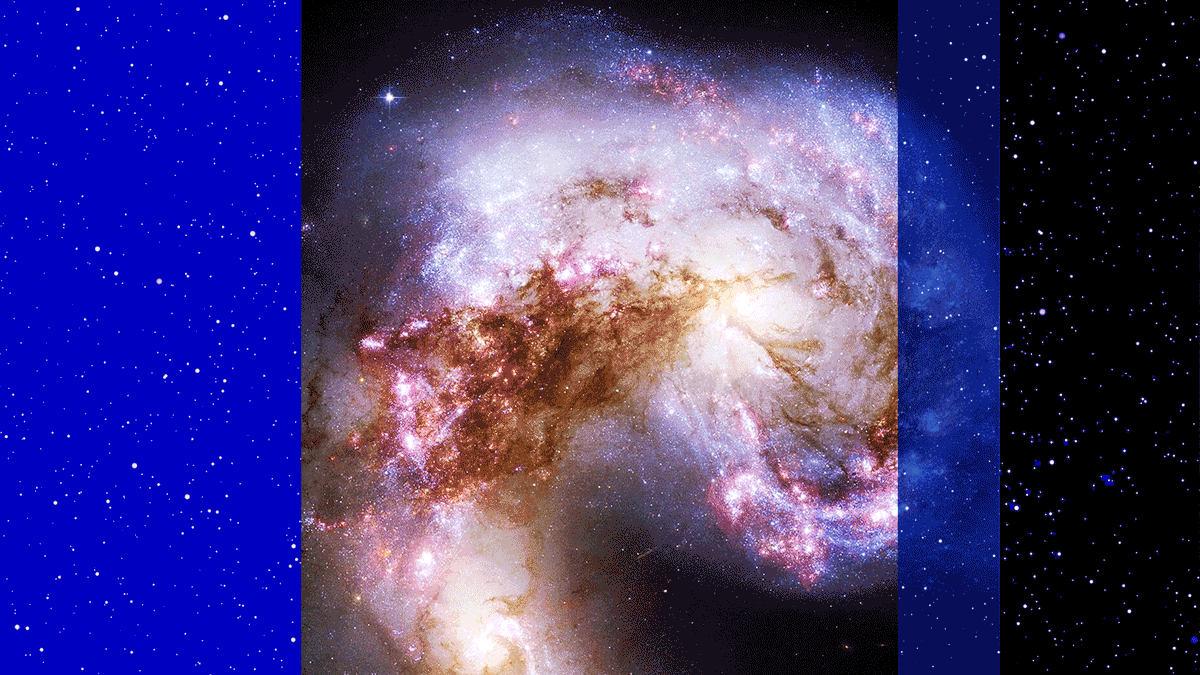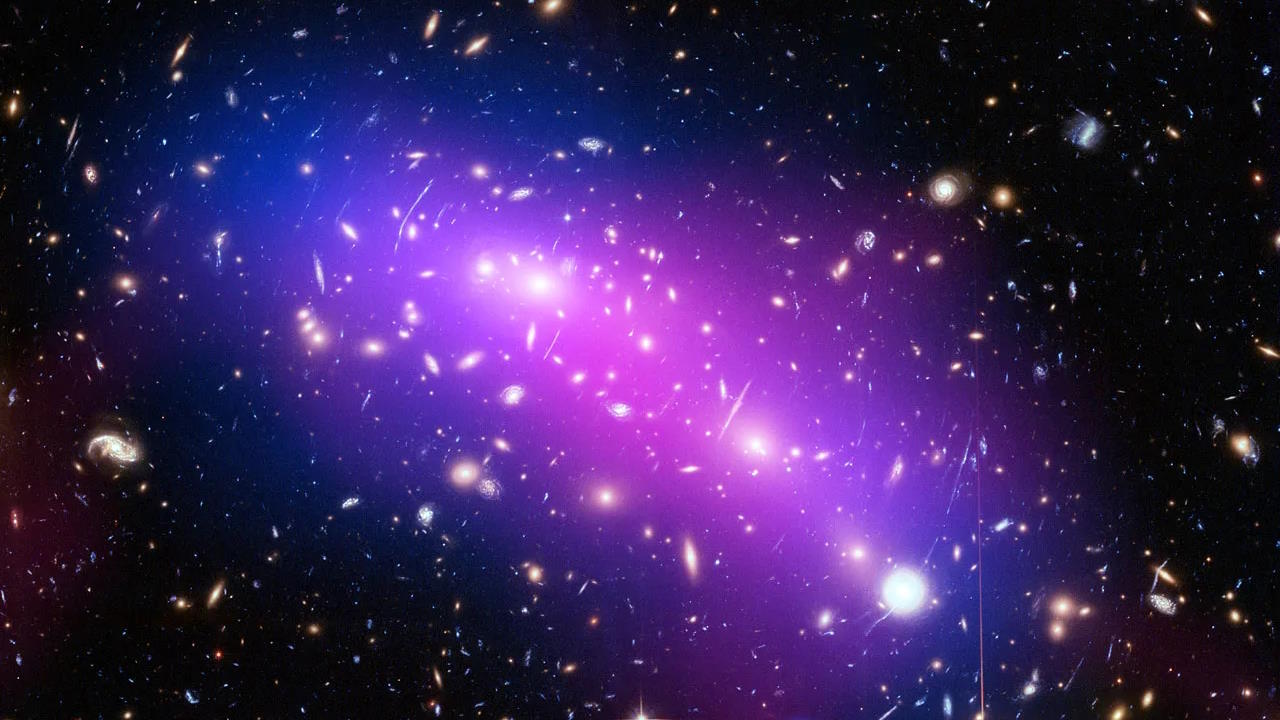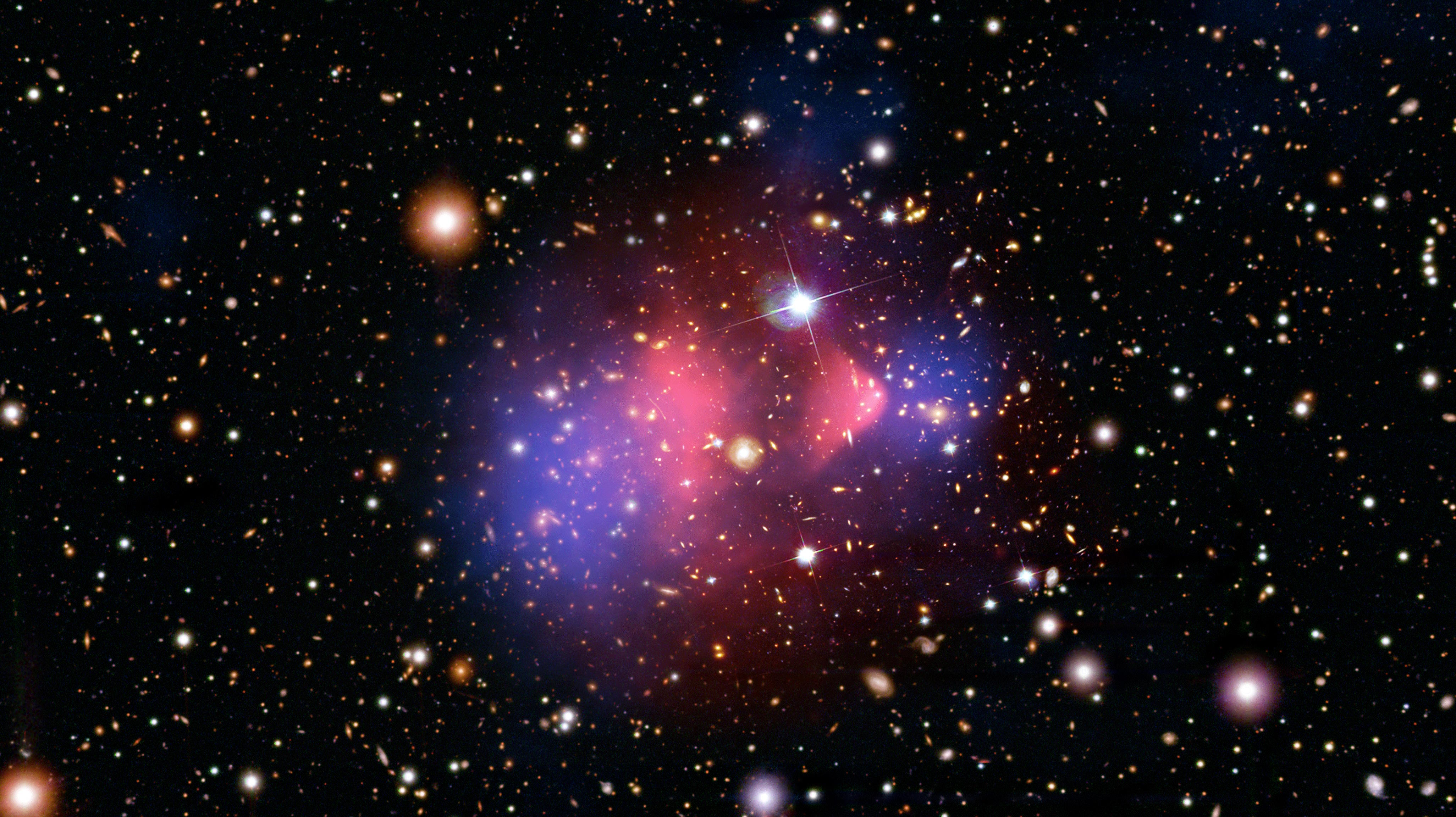Cosmic Cluster Collision Triggers Trio Of Active Galaxies
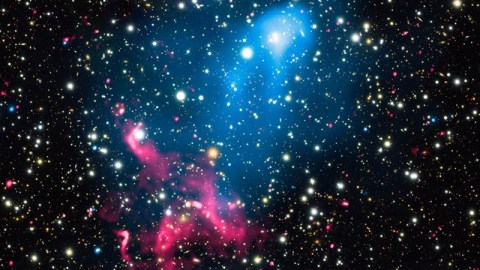
How to turn a galaxy on, once and for all.
“Speculating and predicting what lies beyond the boundary is fascinating. Finding out is even more fascinating.” –Wallace H. Tucker
When two galaxy clusters collide, the physics of the collision reveals where the normal matter is.
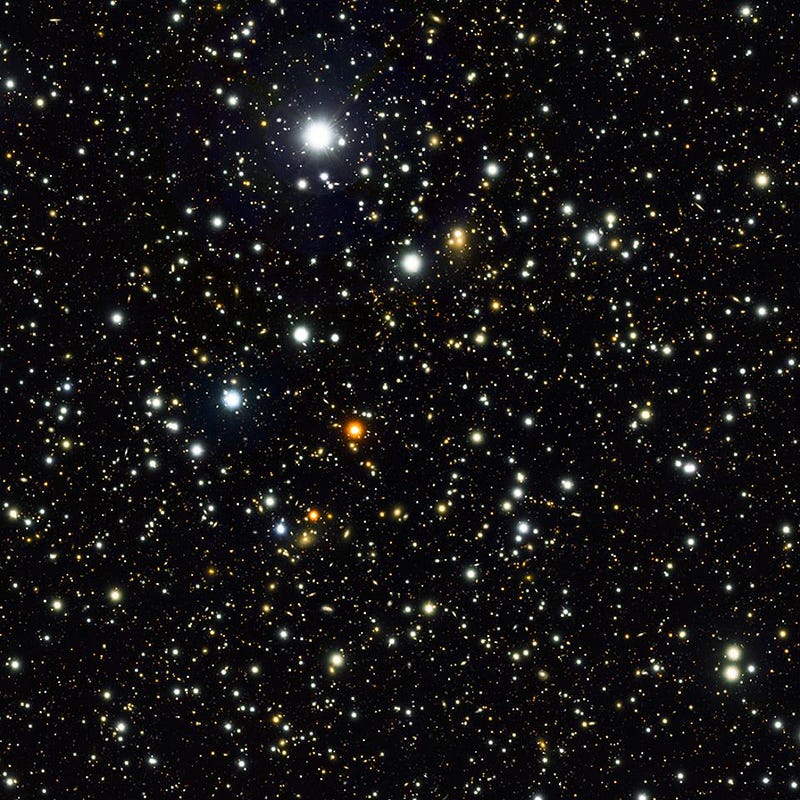
Rather than located in the galaxies themselves, the vast majority is found between the galaxies in the intra-cluster medium.
When the clusters collide, their mutual gravity causes an incredibly energetic cosmic smash-up, heating the gas to such high temperatures they emit X-rays.
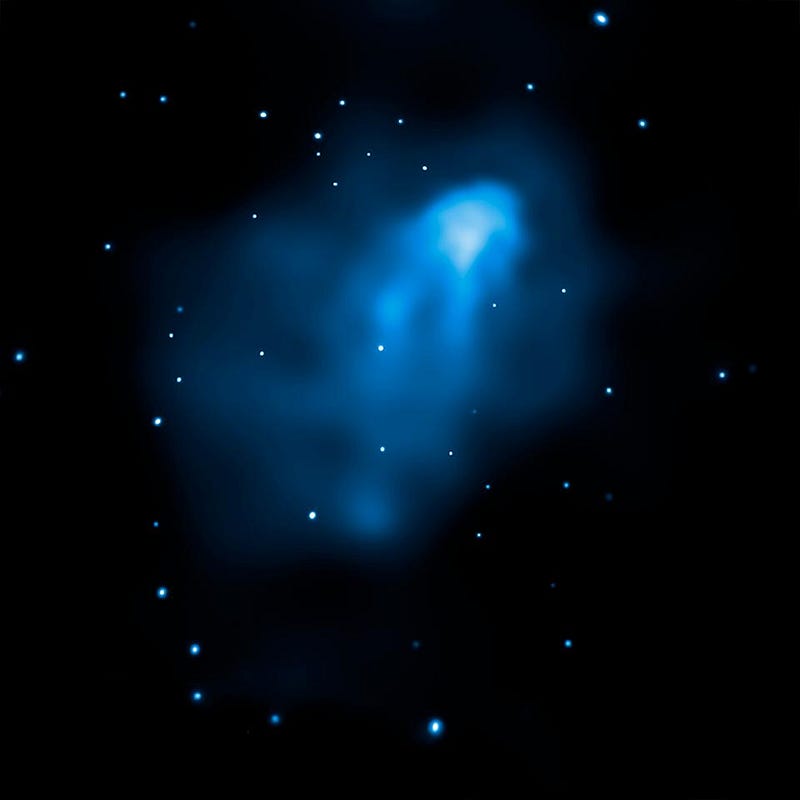
Mysteriously, on the outskirts of the collision, intense radio emission can be found.
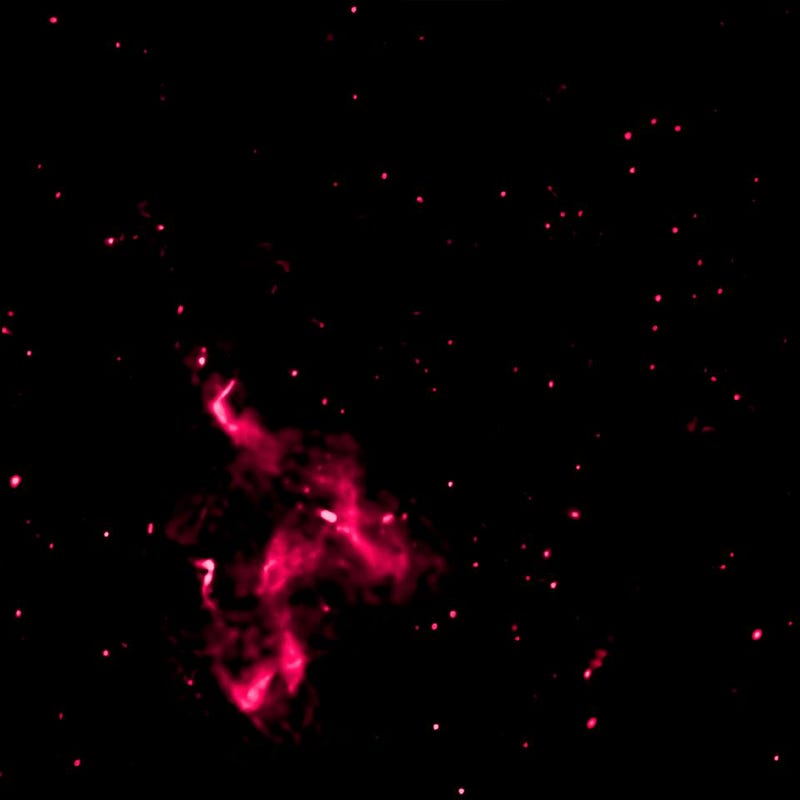
The fact that these two signals are offset indicate that there’s another, secondary process at work.
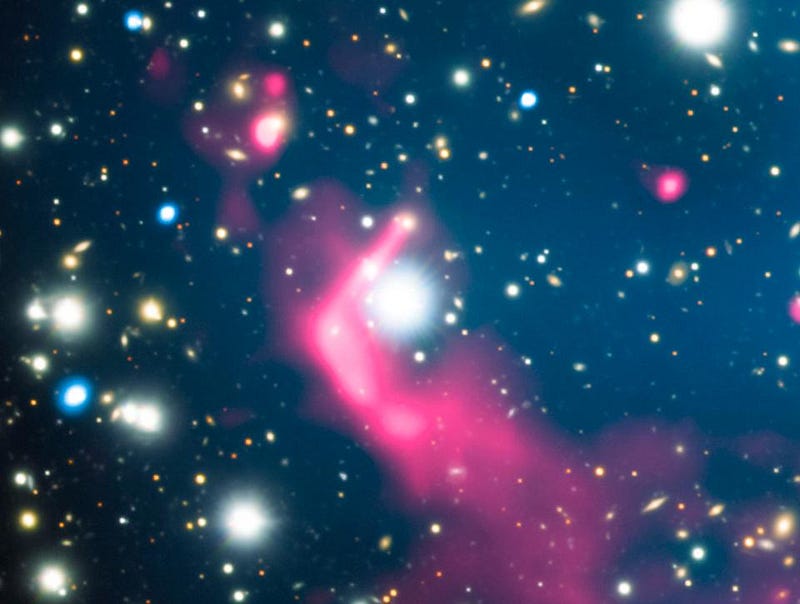
A closer inspection reveals that the shockwaves from the colliding cluster gas is actually activating the supermassive black holes at the centers of three independent galaxies.
The supermassive black holes each exhibit jets and weak shocks, but only weak shocks are required to boost the jettisoned electrons by an additional factor of 1,000,000 in energy, creating this radio emission.
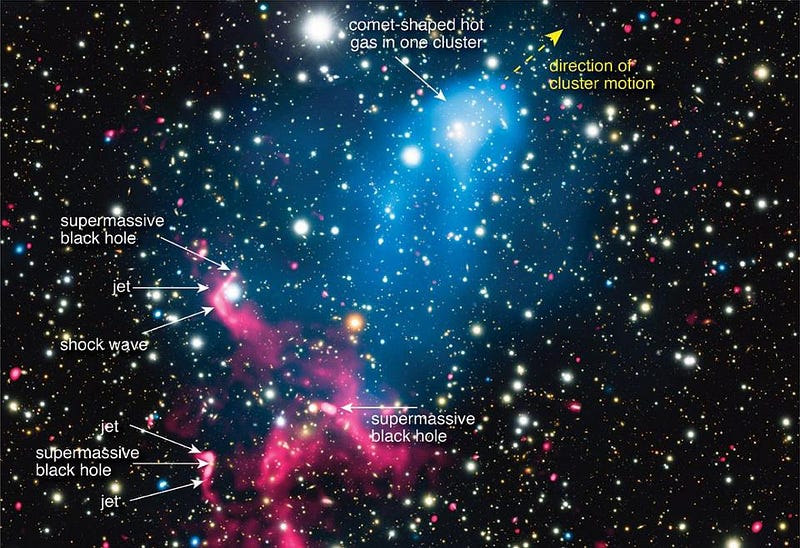
The giant structure of shocks is two million light years across: about the Milky Way-Andromeda distance.
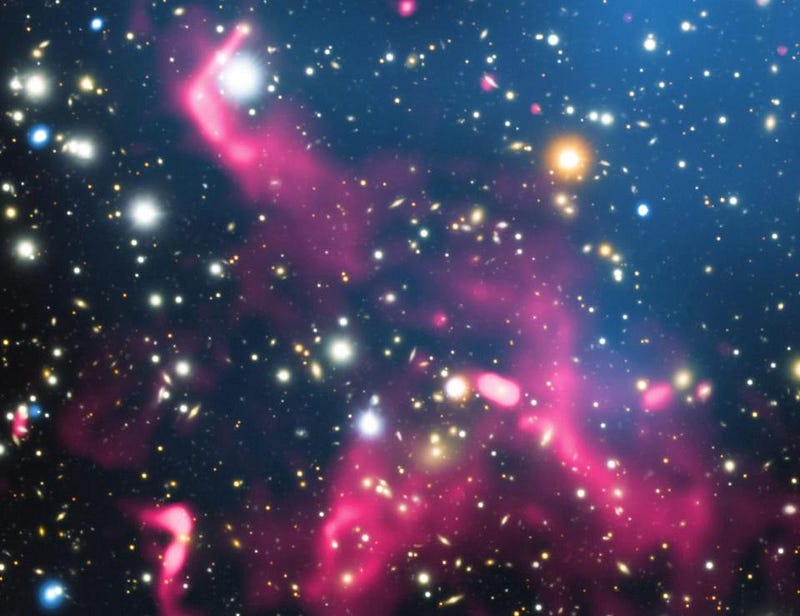
A combination of low-frequency radio arrays and a new X-ray telescope, ESA’s Athena, will reveal the full mechanism.
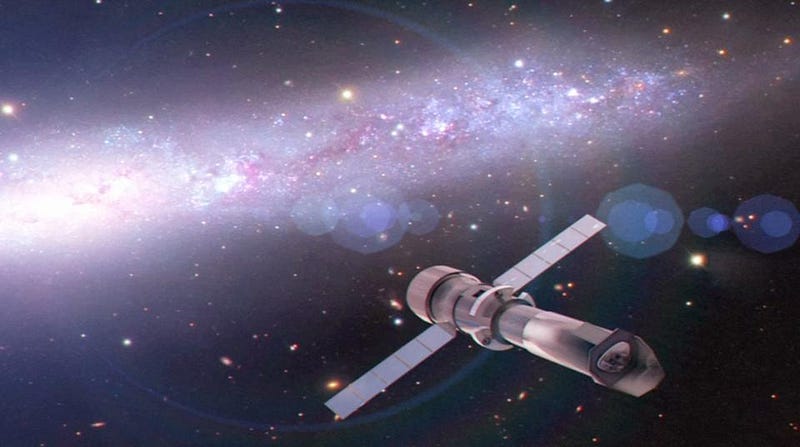
Other galaxies may yet activate/deactivate as the collision continues to evolve.
Mostly Mute Monday tells the story of a cosmic phenomenon or object in visuals, video and no more than 200 words.
This post first appeared at Forbes, and is brought to you ad-free by our Patreon supporters. Comment on our forum, & buy our first book: Beyond The Galaxy!


